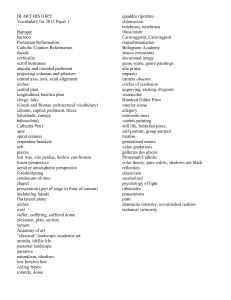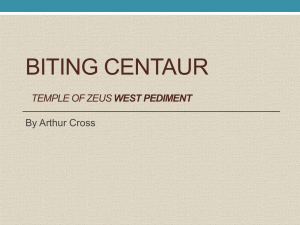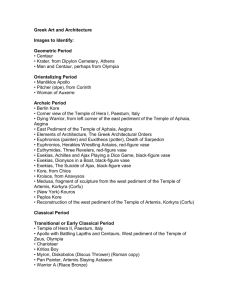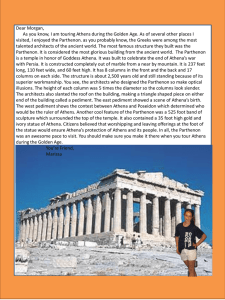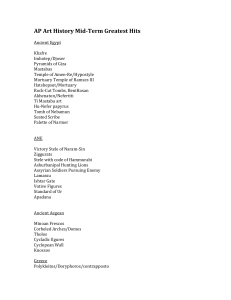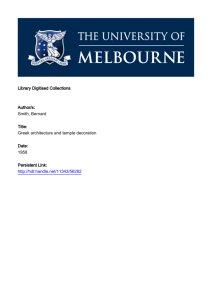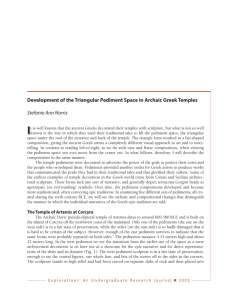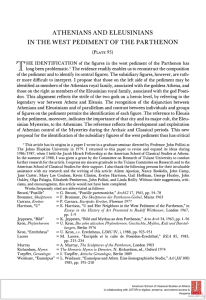Greek Art: Pediments Pediments as text Mythology Duties of citizens
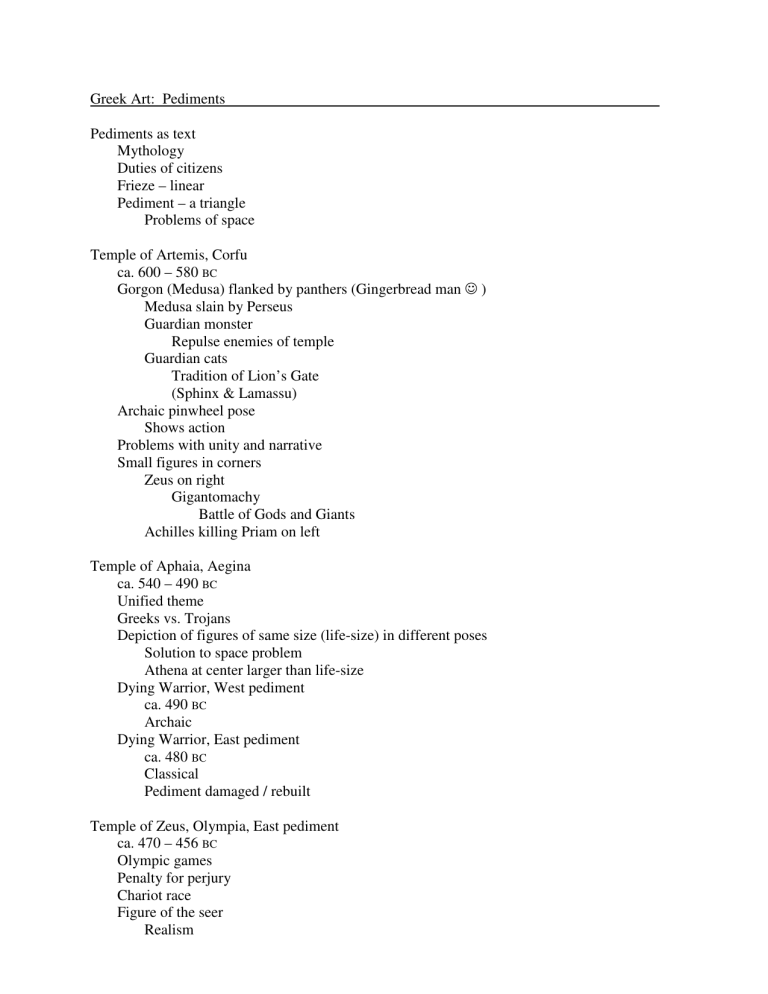
Greek Art: Pediments
Pediments as text
Mythology
Duties of citizens
Frieze – linear
Pediment – a triangle
Problems of space
Temple of Artemis, Corfu ca. 600 – 580
BC
Gorgon (Medusa) flanked by panthers (Gingerbread man ☺ )
Medusa slain by Perseus
Guardian monster
Repulse enemies of temple
Guardian cats
Tradition of Lion’s Gate
(Sphinx & Lamassu)
Archaic pinwheel pose
Shows action
Problems with unity and narrative
Small figures in corners
Zeus on right
Gigantomachy
Battle of Gods and Giants
Achilles killing Priam on left
Temple of Aphaia, Aegina ca. 540 – 490
BC
Unified theme
Greeks vs. Trojans
Depiction of figures of same size (life-size) in different poses
Solution to space problem
Athena at center larger than life-size
Dying Warrior, West pediment ca. 490
BC
Archaic
Dying Warrior, East pediment ca. 480
BC
Classical
Pediment damaged / rebuilt
Temple of Zeus, Olympia, East pediment ca. 470 – 456
BC
Olympic games
Penalty for perjury
Chariot race
Figure of the seer
Realism
Viewer recognizes Peplos and penalty
Interaction of Gods/humans
Ares gave Oinomaos divine horses
Peplos used treachery in race
Destruction
. . . West pediment
Battle of Lapithas and Centaurs
Apollo as referee
Reason over passion
Appears calm
Reinforces proper code of conduct
(Guests and hosts)
Centaurs w/ open mouths
Apollo w/ closed mouth
Parthenon
Elgin Marbles
Pediment figures
Extremely high relief
East pediment
Birth of Athena
Cornice as horizon
Solved spatial problem
Emerging from horizon
West pediment
Battle b/w Athena and Poseidon to be city’s patron
Athenians sit in judgment
Hubris???
Dionysos or Herakles
Reclining
Perfect assembly of form
Metopes
Stories on each side
South – Lapiths & Centaurs
Complicated story
Not simple victory
Perhaps mirroring Athens’ struggle
Frieze – linear
Panathenaic Frieze
Ionic
Interior cella frieze
Continuous narrative
Athenians on temple again
Gods as observers
Erechtheum
Acropolis
Nike Fastening her Sandal
Heavy drapery
